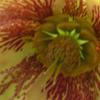
I had a jolly day out this Sunday with my friend Victoria. We indulged in a day of what we call ‘snowdrop peeping’, visiting three very different gardens known for their snowdrops. The first garden was a private, very personal garden, open to invited friends for a coffee morning so I have decided not to include any photos of it. The second garden had a range of snowdrops, stunning views, and was interesting even though it was a cool February day. However, the snowdrops were mainly specialist snowdrops, interesting to this gardener, but photos of small clumps of snowdrops don’t make that interesting viewing so I have decided to share with you just the photos of the last garden – Colesbourne.
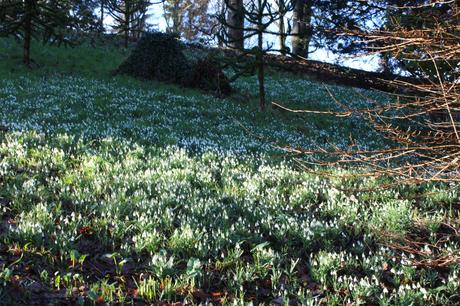
Colesbourne is a mecca for galanthophiles (snowdrop obsessives) as well as those who enjoy an excuse to get out early in Spring for some fresh air and to walk in a beautiful setting. As you can see the snowdrops at Colesbourne grow in great swathes and I was reminded that when I visited a few years back for a talk by Sir Henry Elwes that every year they dig up, divide and replant the snowdrops to aid them spreading.
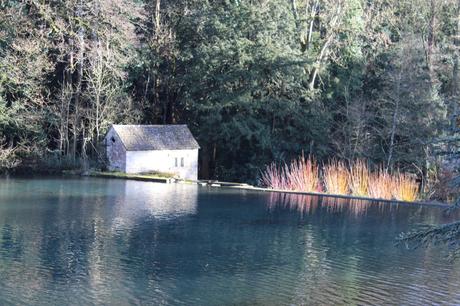
Colesbourne is a private estate with a fairly formal garden near the house but also an arboretum (open at other times of the year) and a beautiful lake which was created in 1922 to power hydro-electric power for the house. I didn’t see the lake last time I visited and was as equally transfixed by it as I was the snowdrops. You will see that even in the winter the water has a strong blue color and it is believed that this is a result of the colloidal clay in the water.
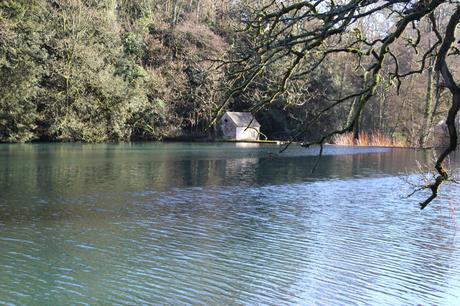
As the house and gardens are situated on the side of a hill the plantings benefit from the slopes which allow the visitor to see the flowers more closely rather than resorting to their hands and knees as I have to in my garden. The below photo doesn’t quite capture the light but when we visited there was a wonderful contrast between the darkness of the yew against the sunlit snowdrop covered slope. In the formal garden are the more specialist and rare snowdrops in tiny groups all neatly labelled. We amused ourselves by playing spot the difference and concluded that whilst we did now appreciate that there were differences we need those differences to be really obvious to us – height, flower size, obvious markings etc.

As with all good snowdrop displays the planting isn’t all snowdrops. At Colesbourne as you get nearer the house the snowdrops are accompanied by Cyclamen coum and Crocus tommasinianus . I think they provide a great contrast to the snowdrops and make them sparkle more.
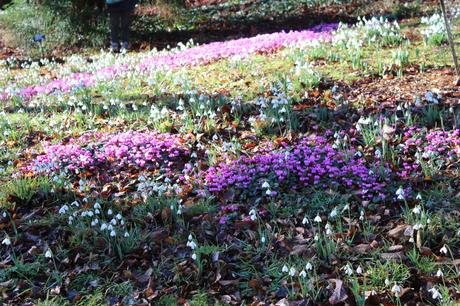
Colesbourne, like many Victorian country houses, has an interesting selection of intriguing outbuildings; this one is, I think, an old ice house. The moss and lichen on the roof was a delight.
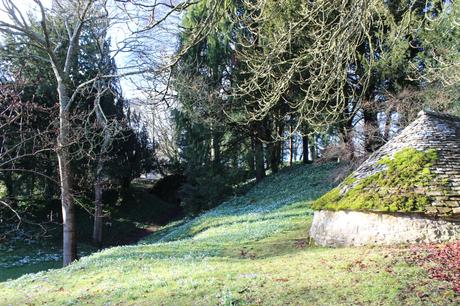
And just for my galanthophile friends I did buy some named snowdrops – three small pots of Galanthus S Arnott which is scented and I want to start to create a small swathe of snowdrops in part of the garden where I don’t have any snowdrops. I also bought Galanthus Ophelia which is a double and apparently a reliable snowdrop for establishing. Galanthus woronowii a species, which bright green broad leaves, was acquired from one of the other gardens and will be a great addition to my collection which is around 20 varieties now.
I feel like I have now fully embraced the snowdrop session and I am now ready for the next installment of Spring – Daffodils and Narcissus.
Advertisements